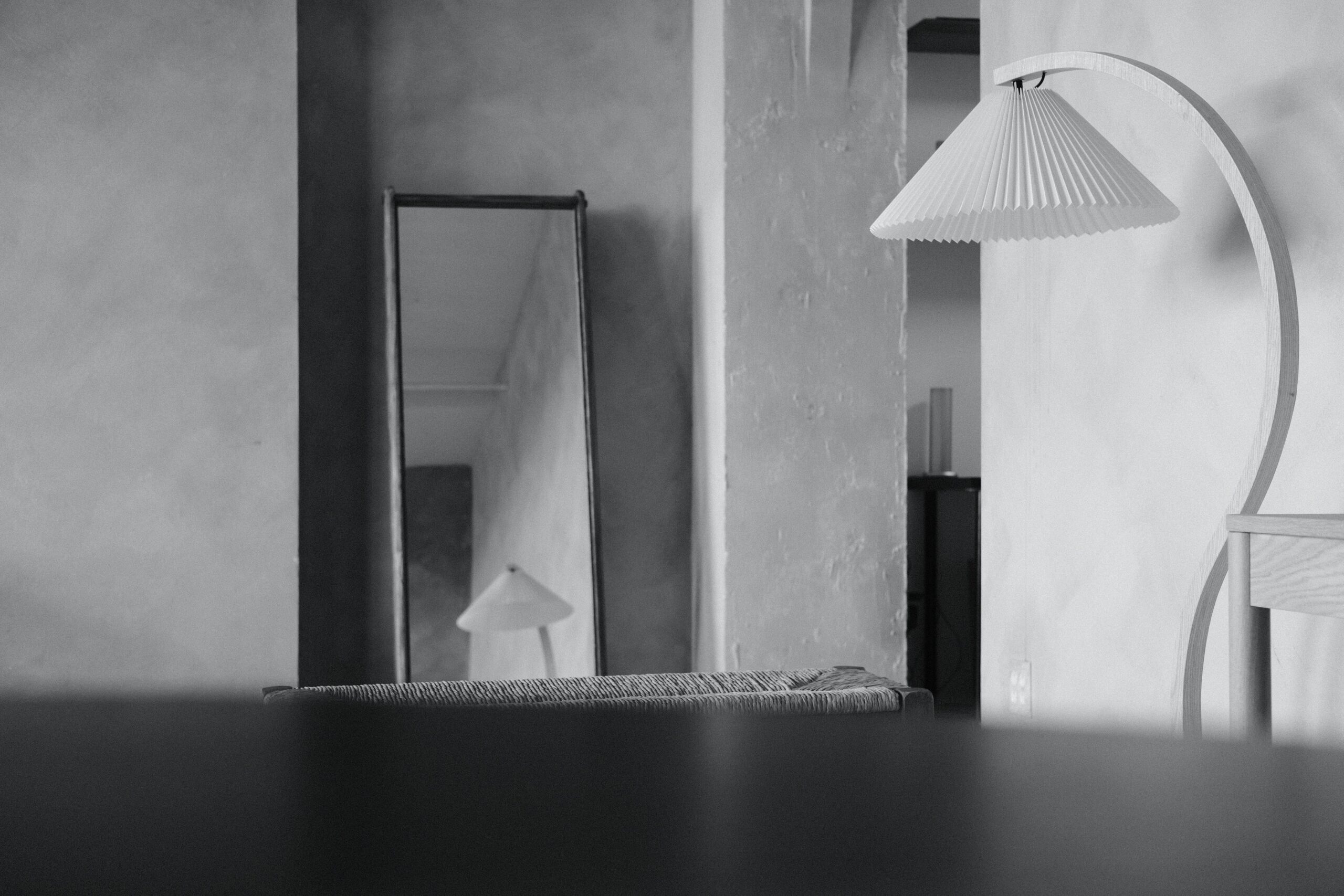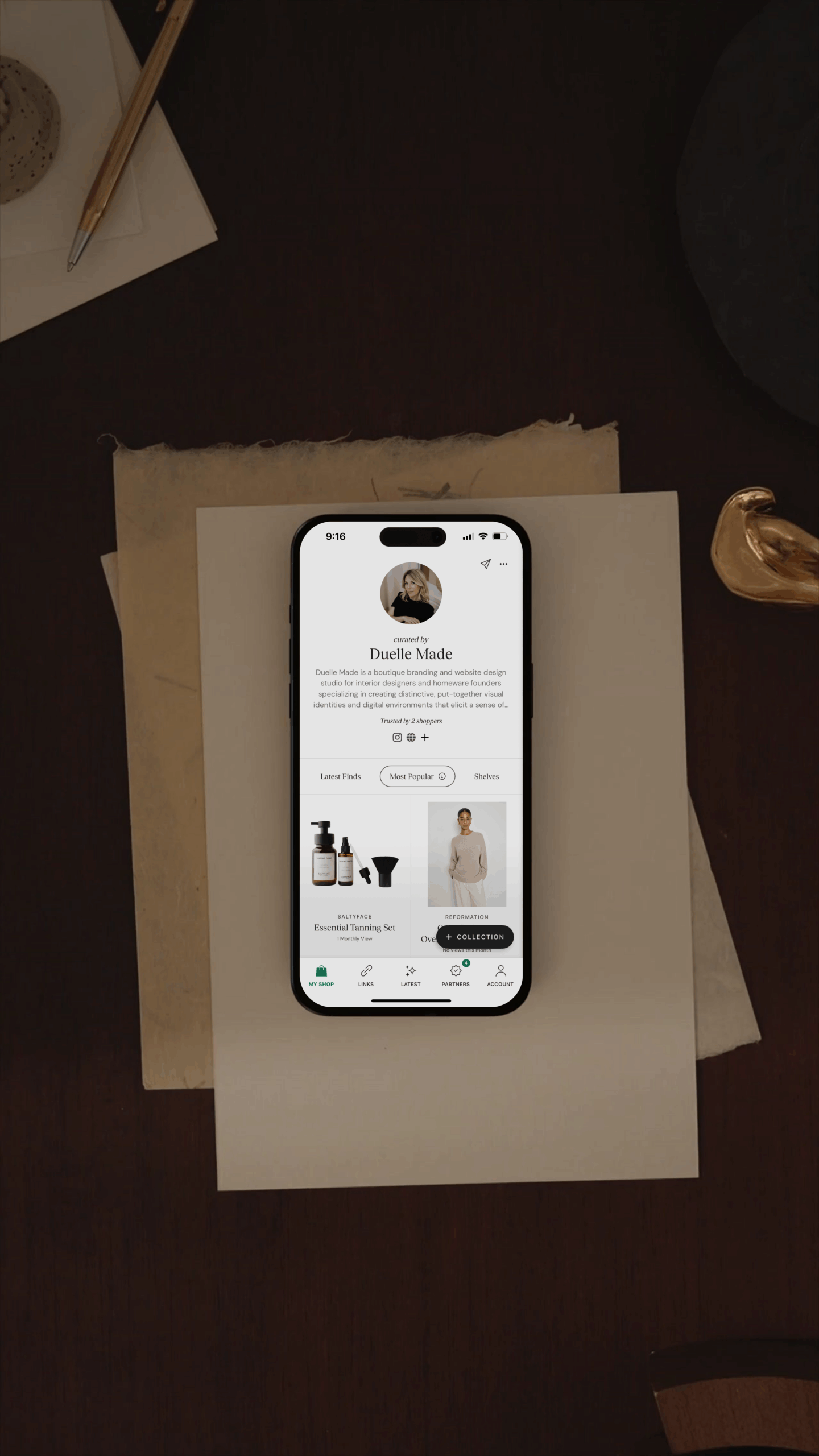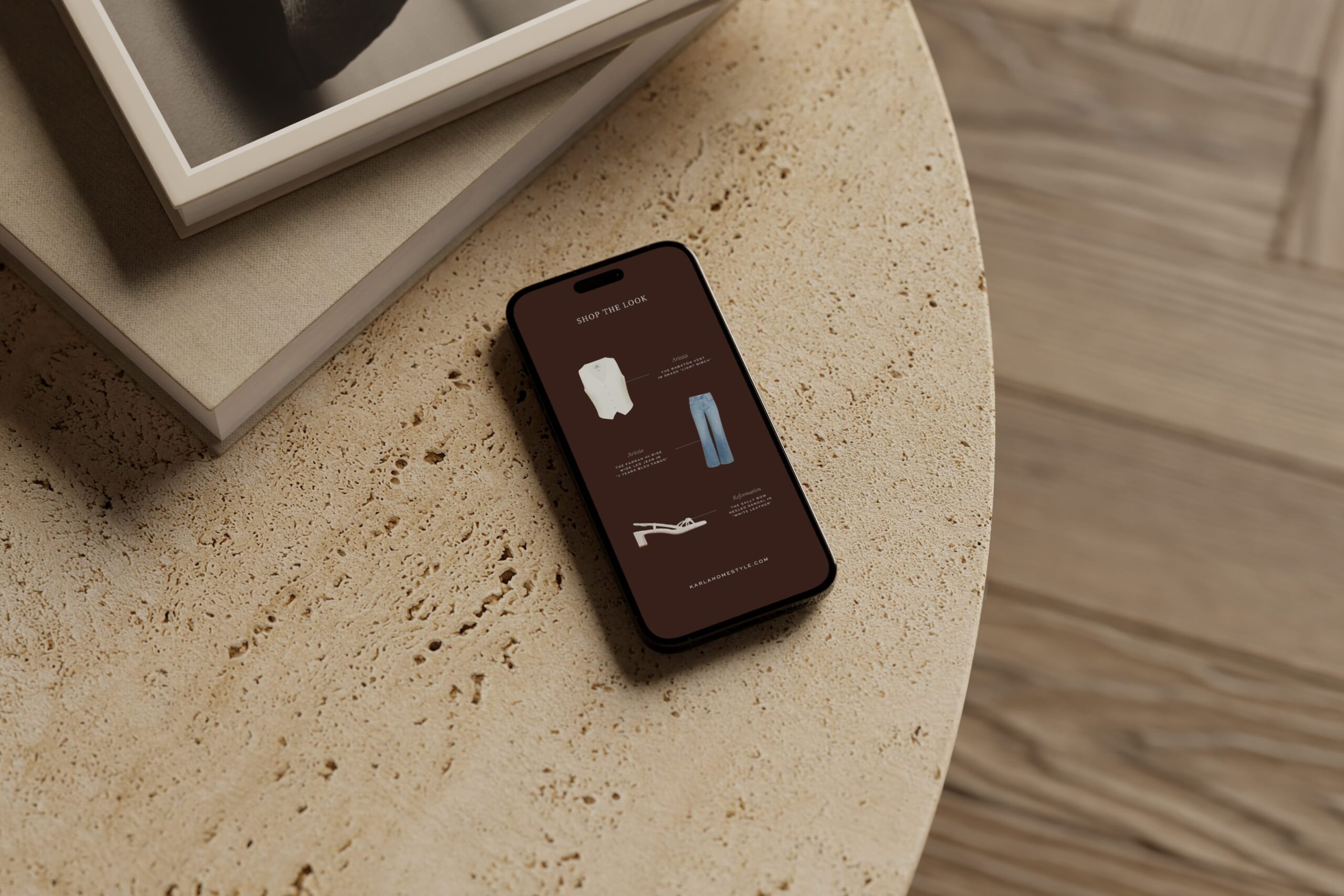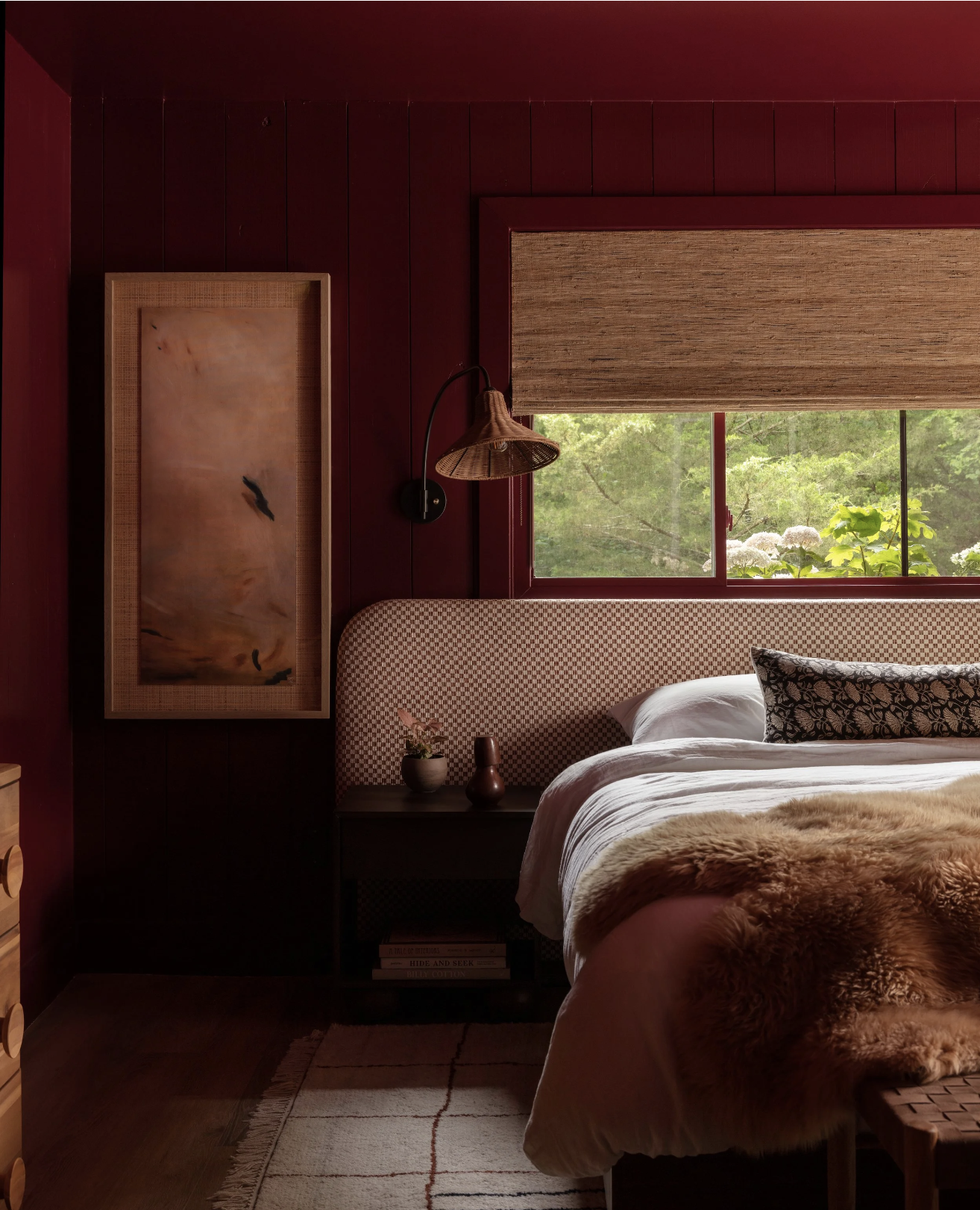In the design world, two stories are constantly being told: the experience you create for clients as you bring concepts to completion, and how that journey is perceived through photography.
Your clients live with your designs daily – feeling the functionality, noticing the details you laboured over, and enjoying how their spaces serve and support them for the better. As for the ones who’ve yet to step inside and experience your talent for themselves?
Your photography invites them in.
More than just your completed homes, your portfolio communicates your craft and capabilities, revealing what you can accomplish for your target clientele. People start to grasp the return on their potential investment. And also what kinds of projects you favor and excel in.
So, as the saying goes, every interior design photoshoot really is worth a thousand words. But are they saying the right ones?
Perception is Reality
Your website and social media presence matter to potential clients.
What they don’t see when visiting your online home is the months of planning, the sourcing challenges you overcame, or the intricate installation process. They only see what your interior design photoshoot reveals. In that first impression alone, the quality of your imagery directly impacts how they perceive your design work.
Settling for “good enough” photography – or passing it up entirely – is a compromise that holds talented interior designers back. And it ends up costing much more than the price of a project photoshoot ever would – liabilities like:
- clients undervaluing your expertise,
- visual friction with your brand elements,
- misaligned clients in your inbox,
- and even going unpublished.
You know photography is something you should invest in. But how can you make sure you achieve the outcome you’re hoping for – turning multidimensional spaces into two-dimensional images that represent the high caliber of your business?
How to Maximize Your Interior Design Photoshoot Investment
Here are some things to think about when prepping to book your next project photoshoot:
1. Make a List of Your Priorities
First, create a wish list of what you want to capture, noting why these images matter to the growth of your business. Reflect on which specific spaces or design elements will be necessary for your marketing strategy, showcasing your approach and signature touch. Then, note where you envision these photographs finding their home – maybe gracing your website homepage, breathing new life into your portfolio & social media presence, and reserving hero shots for media submissions.
This exploration goes a few layers deeper than personal preferences. Try stepping into your ideal client’s world – what will speak to them when they encounter your work? What tone do you want to set for working with you? Is it your reverence for the heritage of historic homes? Or how a multi-use, practical layout makes adults and children feel welcome in a family gathering space?
And with that comes your budget allocation. Think baby steps, prioritizing a single signature project for professional photography, then adding on with standout completions to come. Over time, this consistent investment expands your portfolio into one that represents your present-day excellence and style, as well as the design work you wish to do more of.
2. Research & Have Conversations with Photographers
There’s so much more to finding the right photographer than that “love at first sight” feeling when browsing their work. Connecting with someone’s style matters. But the chemistry between designer and photographer lays the foundation for successful interior design photoshoots ahead.
When you find someone you trust as implicitly as your tradespeople and suppliers – someone who understands the nuances of capturing spaces in their most flattering light, meshes with your style, and brings their creative spirit alongside yours rather than imposing on it? That’s a win.
They become an extension of your creative team, which is essential since ideally you’ll collaborate with them long-term to maintain a consistent visual narrative throughout your portfolio.
To get there, gather your select list of photographers who’ve caught your eye. If you need a starting point, Haven has an impressive Vendor Guide featuring vetted experts in this department.
Review each photographer’s work carefully, noting anything that stands out. Then, arrange a conversation to learn about more than just their pricing and availability. Share some stories behind your work, what inspires you, how you want your spaces to make people feel, and what elements you want emphasized.
And for some questions that answer to their skill level and the experience you can expect:
- What’s your preparation process like? Do you prefer to see the space beforehand?
- How much retouching or editing do you typically do after a shoot?
- How many final images can I expect from a typical day of shooting?
- What’s the turnaround time for receiving the final edited images?
- How can I use the images you deliver? What are the licensing rights?
- There are legal aspects involved when investing in this kind of service. Make sure you understand your rights to the images upfront so you’re not surprised later. Best case scenario is you own them, giving you the luxury to decide how you’ll use the visual assets without additional fees.
- Do you offer lifestyle or portrait photography during interior shoots?
- Some photographers may allow for a few headshots in the finished space. This helps gather complementary brand imagery for use on your website, socials, and/or possible publications and speaking engagement opportunities – without arranging another photoshoot. Just share your interest early so you can prepare your preferred look.
- Do you partner with an interior stylist and/or videographer, or can you recommend any?
Finding a photographer who feels like a fit for you often comes down to that first meeting. You’ll notice they’re not just patiently answering your questions but also genuinely interested in you and your business.
They might take notes as you speak about your vision, mention specific details about your work that stood out to them, and suggest creative possibilities that’ll support the outcome. These thoughtful gestures typically signal someone who will care deeply about your project and sees themselves as a collaborator in your success.
3. Give Yourself Pre-Shoot Planning Time
Your photoshoot deserves nothing more than perfect execution. And that doesn’t happen by chance, but by timing and planning it right.
Find the “Sweet Spot” – When is the best time to shoot? This is a personal decision and depends on what feels the most seamless to you. According to Jake Arnold in an interview with The Expert: letting your projects “breathe” for a few months after installation gives the home some space for everything to settle in nicely. For real life to be lived among your designs. However, practical considerations like scheduling, marketing needs, and potential client modifications may make this a challenge. Regardless of the timeline, here’s what matters:
1) your contract clearly outlines your photography requirements & expectations, and
2) the results of your work don’t go undocumented.
As you go, experiment with different approaches and know you can always refine the process. You’ll find the right rhythm for photography that best showcases your design vision.
Site Scout Together – Schedule an unhurried pre-shoot walkthrough with your photographer. Think of it as introducing two friends who haven’t yet met: the space and your photographer’s creative eye. Together, you’ll discover where the morning light plays best across that cozy dining nook or how afternoon shadows create drama in the library. This time allows your photographer to anticipate equipment needs, think through lighting strategies, and anticipate any challenges before shoot day – making the most of every minute “on set.”
Add Styling Touches – Consider hiring an interior stylist who understands how to translate three-dimensional spaces into storied two-dimensional images. They’ll bring fresh eyes and a caring touch to create settings that photograph exceptionally well. Also, if you plan on taking headshots at the shoot, allocate proper wardrobe styling time, too.
4. Execute With Confidence on Shoot Day
It’s the day your creative vision comes to life through another medium! Arrive with excitement for what’s to come. Your hard work got you here.
Your Presence Leads The Way – As the creative heart behind each design decision, your gentle guidance during the shoot brings depth to the images. You are the one who intimately knows why that particular fabric was selected or how that architectural detail connects to the home’s history. When you share these fun facts with your photographer, they can capture the visual appeal and the intention embedded in your projects.
An Atmosphere of Creativity – The demanding nature of an interior design photoshoot often means everyone becomes so immersed in the work that basic needs like eating (and having fun!) get overlooked. Consider supplying lunch, nourishing snacks, and refreshing drinks for those on set, especially the photographer & their team. Also, music can do wonders for keeping spirits high. Curate a playlist with a mix of relaxing, inspiring, and upbeat tracks to play on a portable speaker.
Journey Through the Spaces – Like any good story, your photoshoot will naturally flow through welcoming beginnings, cozy middles, and cherished details. You might start with views that show how specific spaces connect and converse, then drift closer to capture the comfortable nature of a sitting area or imaginative play corner. Finally, those carefully considered touches – the exquisite hardware, styled bookshelf with old and new accents, and fabric textures playing off one another – complete the visual narrative.
Moments of Reflection – Throughout the day, intentionally take little pauses to review images and ease your mind that everything is turning out as it should (if not better than expected!). If subtle elements need adjusting – like a flower arrangement, a reflection that wasn’t intentional, or shuffling around of décor – you’ll catch them. Give yourself and your photographer permission to move at a pace that honours the care you’ve put into each space.
Quality Over Quantity – Remember that less can be more. There’s no need to strive to gather an overwhelming library of every nook and surface. While that might sound appealing for a feeling of completeness, your ideal client will appreciate you guiding them through a more curated, easy-to-digest visual experience. A collection of fifteen extraordinary images that truly touches the spirit of your design philosophy will serve you far better than fifty adequate ones.
5. Make Arrangements for How You’ll Use Your Photos
Now comes the process of sharing your work with the world.
Create Your Website Portfolio Experience – At Duelle Made, we prefer to lay out the photography in a way that brings the user through the home – the same way you would experience it in person. Imagine a home tour elevated into something more intimate and evocative than a simple gallery – a case study balancing different perspectives, from full-room shots to details and vignettes.
Refine Your Social Media Presence – A single interior design photoshoot can yield months of content when you alternate between full-room reveals, detailed moments, material stories, and transformation conversations. Create platform-specific snippets that accommodate different aspect ratios without compromising composition.
Repurpose for Opportunity – Transform still photos into engaging video content by combining multiple angles with subtle motion effects. Extract colour palettes from successful projects to create educational content about your design approach and aesthetic preferences. Highlight material selections and custom elements through detailed close-ups, demonstrating your attention to craftsmanship. There really are endless opportunities to tell micro-stories of what you do and how you do it.
____
Is the immediate expense of an interior design photoshoot substantial? Yes, there’s no denying that. But the long-term impact is greater. Investing in high-quality imagery means spending less time explaining your value, facing less resistance to your fees, and attracting more clients who appreciate (and fully trust) what you can bring to their spaces.
Ready to pair your high-quality imagery with a brand identity and custom styled website that makes a great first impression? Schedule an inquiry call today.



